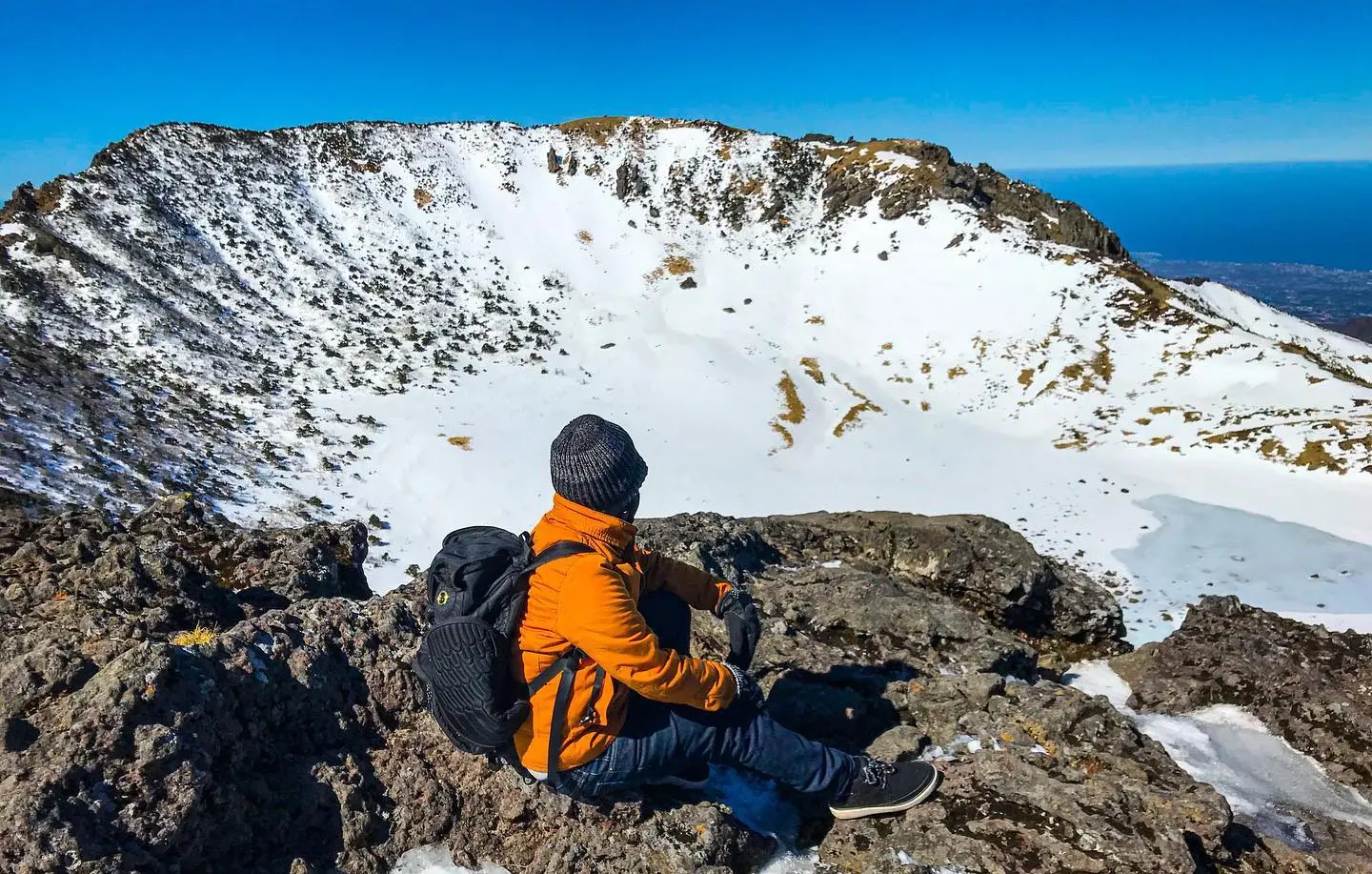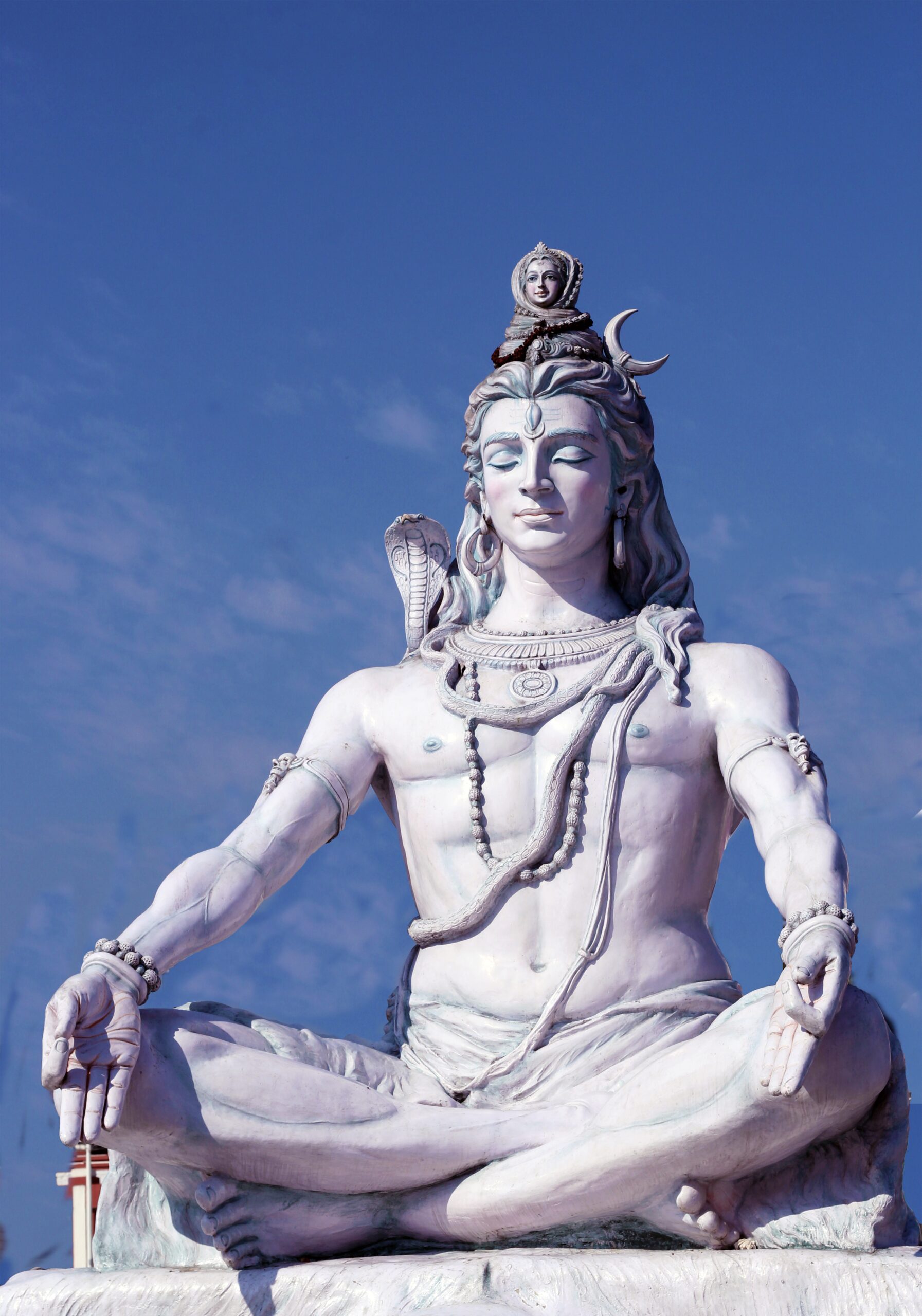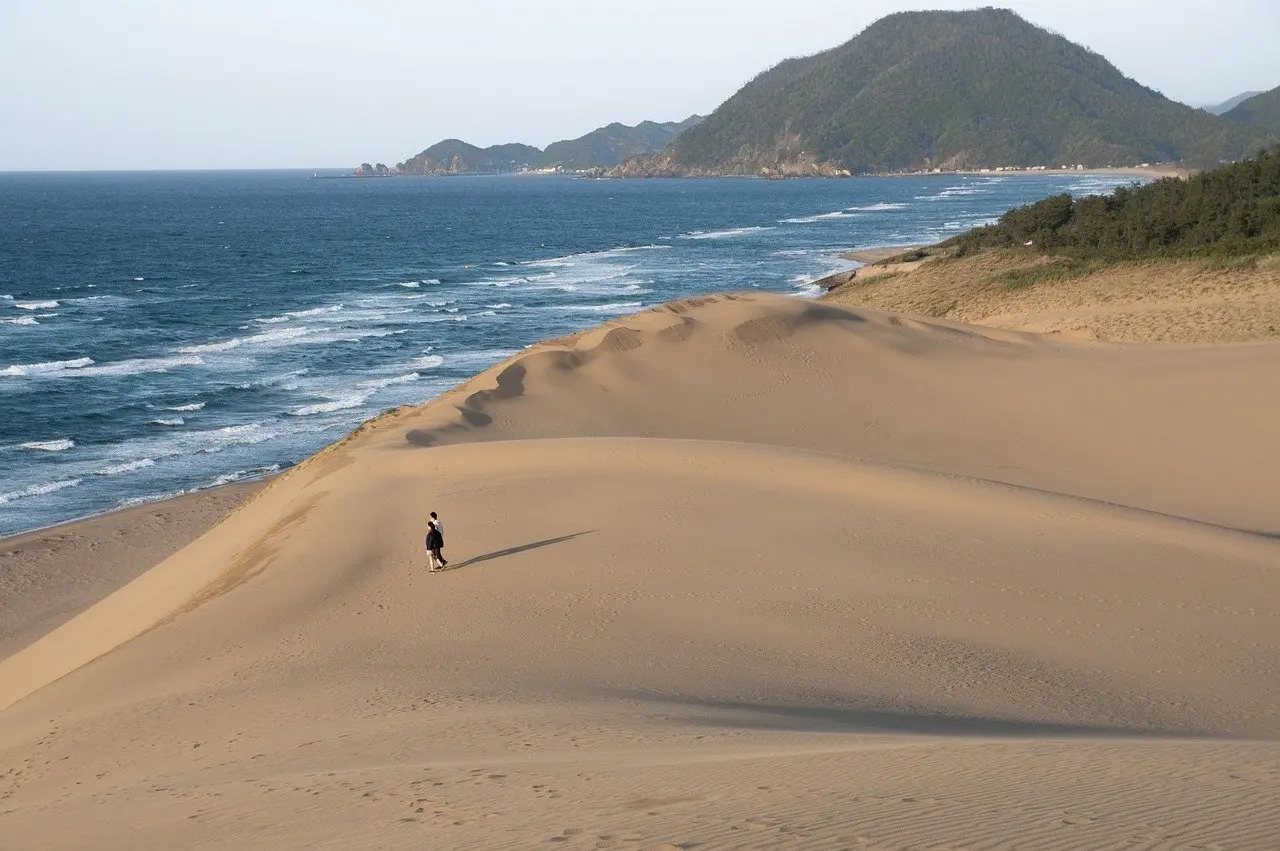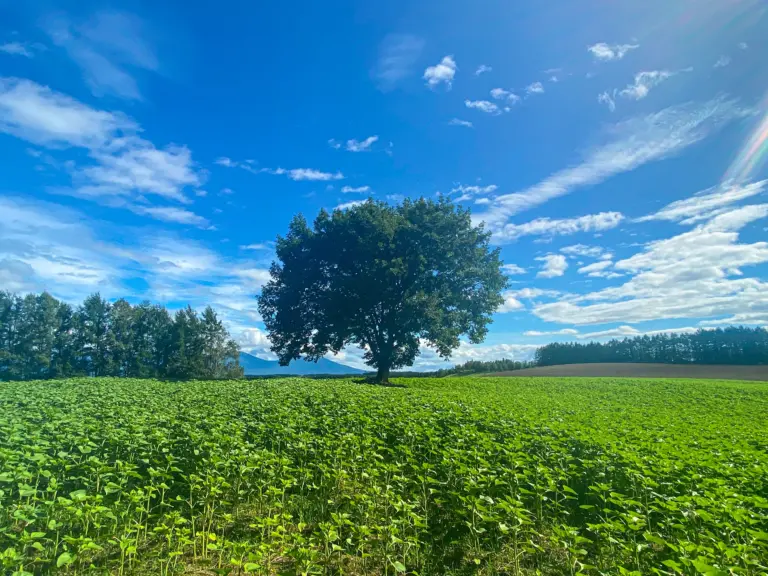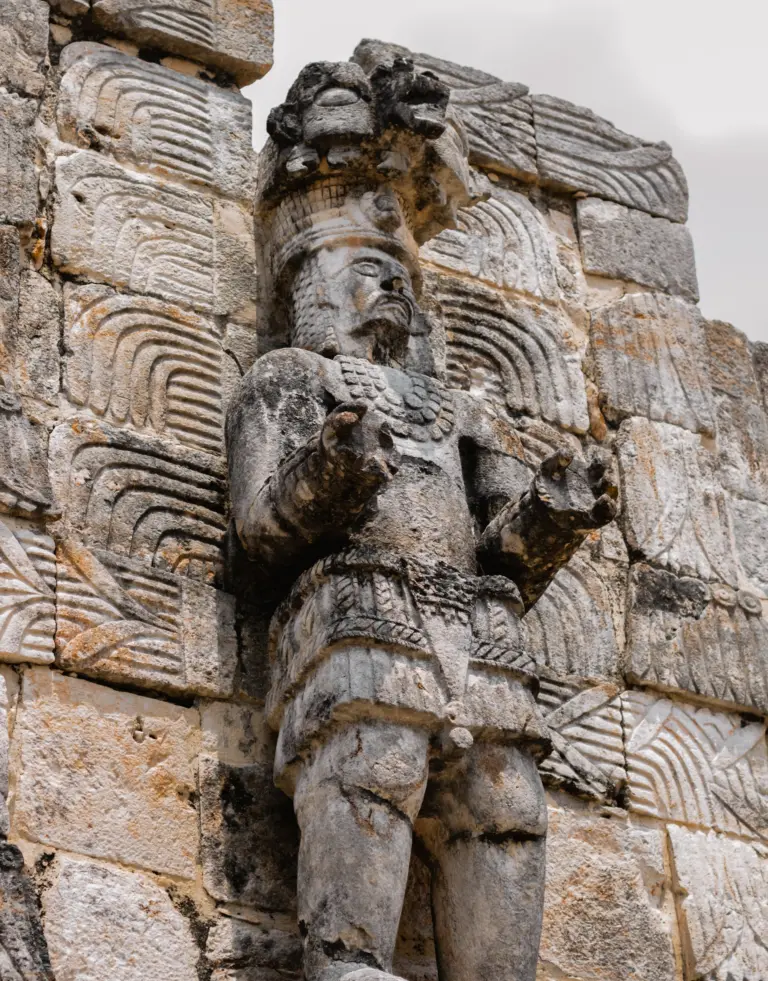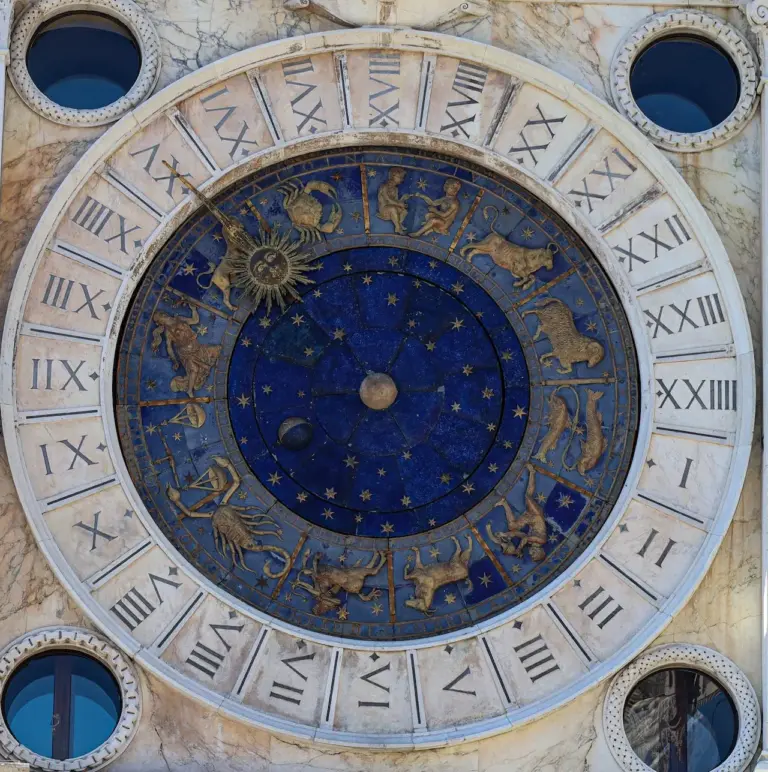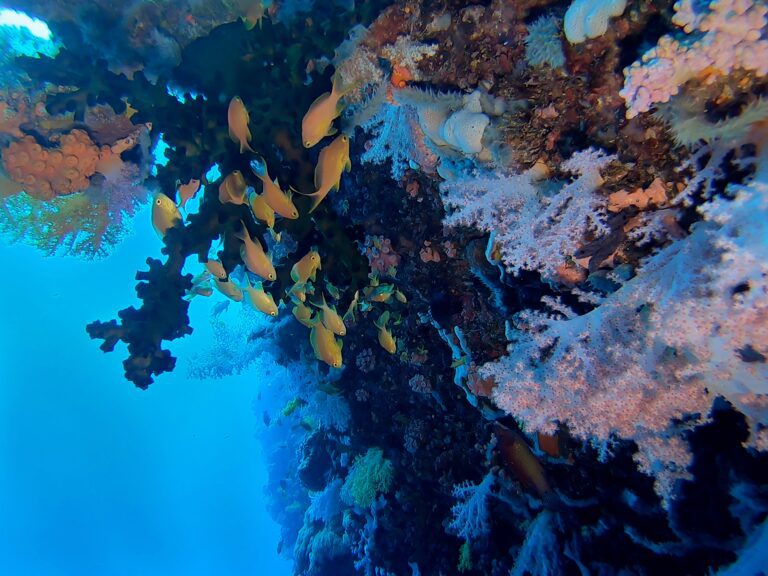Oh Noboribetsu. Think you know Japan? Think again.
Here, steaming geysers play tag with ancient legends. Demons? Yep, we’ve got those—lurking in the shadows of Hell Valley, just waiting for a friendly chat. The King of Hell? He’s got a dedicated shrine right in town, celebrated in the annual Hell Festival to boot!
But don’t pack your bags in a hurry; there’s more to this town than it meets the eye.
Being one of the hot spring capitals in Hokkaido, Noboribetsu offers an amazing mix of culture meets nature. It’s a place that’s quite dear to my heart as I felt this part of my Hokkaido trip truly rejuvenated me after all that hiking and cycling around Biei.
Don’t get put off by all the infernal words because in the end, Noboribetsu is a place that gets you up close and personal to Earth’s volcanic forces at work. From hot springs, geysers, and sulfur pools, it’s an ethereal landscape like no other!
Are you ready to take that journey?
Table of Contents
ToggleHistory of Noboribetsu
Noboribetsu is more than just its hot springs. The town’s history begins with the Ainu people, Hokkaido’s indigenous inhabitants, who have lived in this region for over 20,000 years.
The Ainu, relying on the land’s abundant resources, discovered the therapeutic qualities of Noboribetsu’s springs centuries ago!
By the 1800s, the unique therapeutic qualities of Noboribetsu’s springs didn’t remain a local secret for long. Fast forward to the 20th century: the town’s natural wonders, like its dense forests, shimmering lakes, and the otherworldly Jigokudani or “Hell Valley” became much more well-known.
With a 1.2 sq km (0.46 sq mi) expanse, Hell Valley is the main source of the town’s hot spring waters, featuring sulfur deposits and steam vents, contributing to local legends of demons (oni) that you’ll no doubt come across.
Top Things to Do in Noboribetsu

1. Explore Jigokudani, the Valley of Hell
Jigokudani is a visceral showcase of the Earth’s geothermal activity. The very air is heavy with the distinct aroma of sulfur, and once you catch a whiff, you’ll know you’ve arrived.
It’s hard to miss the soaring columns of steam, a result of superheated water just below the surface meeting the cool air above. The steam vents, or fumaroles as they’re scientifically known, can reach temperatures upwards of 100°C (212°F).
Throughout the valley, there are numerous hot springs, some of which reach boiling temperatures. This boiling water not only contributes to the steamy atmosphere but also dramatically alters the landscape. The minerals from the hot springs deposit over time, creating unique and intricate terrains that are a feast for the eyes.
Depending on the minerals present, you’ll find patches of earth in vibrant shades: the yellows from sulfur, stark whites from silica, and even the striking reddish-brown from iron.
While the area doesn’t have the black egg tradition of Hakone’s Owakudani, its thermal waters have been channeled into onsens throughout Noboribetsu.
2. Watch a Geyser at Sengen Park
Sengen Park offers a front-row seat to a small geyser tucked away in an alcove. It’s certainly interesting as it’s not every day you get to see a geyser erupting at a local park.
Roughly every three hours, a distinct audible change occurs. The sound of mounting pressure—akin to an enormous kettle about to whistle—fills the air. This crescendo culminates in a powerful eruption. Water, superheated from its journey underground, is thrust upward, enveloped by a thick cloud of steam.
Sounds good on paper, eh? But in reality, it’s quite a small geyser and it’s on the way to Jigkudani so why not watch it blow if you arrive on a good time?

3. Lap Around the Hiking Trails
After you’re done walking around the boardwalk around Jigokudani, there are also several walking trails that meander through verdant woods. Try to hike up higher towards the lookout point to catch an amazing view of the otherwordly landscape below.
The trails take roughly around the 20 to 30-minute mark but eventuall you’ll reach another highlight: Oyunuma Pond.
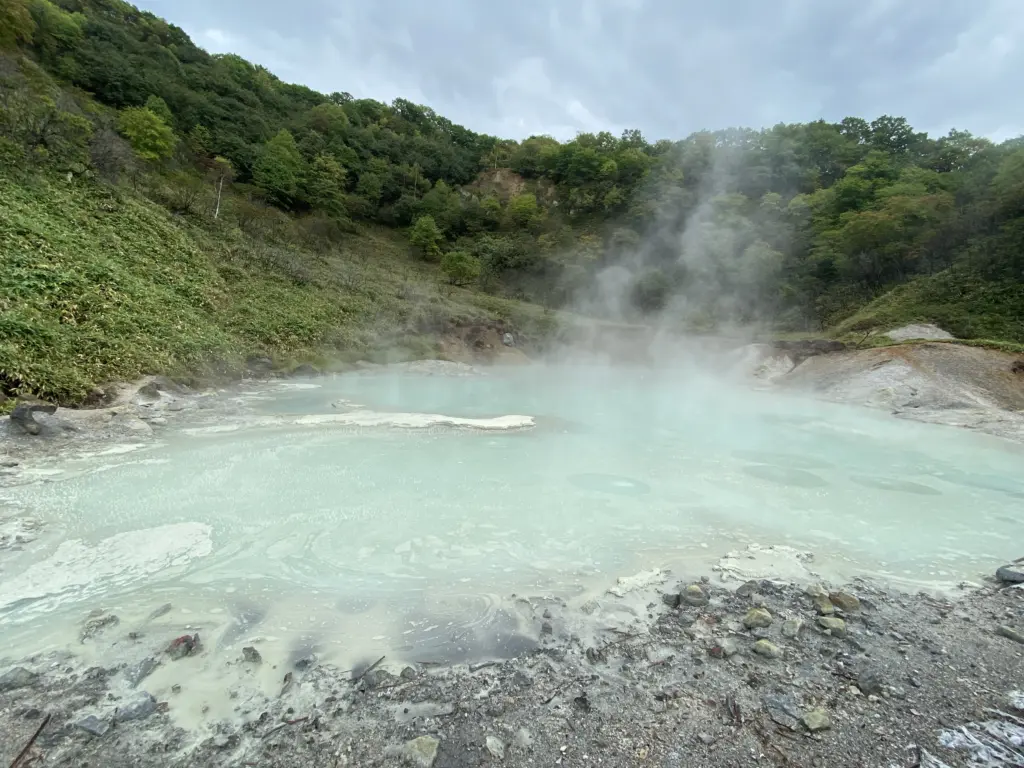
4. Marvel at Oyunuma and Okunoyu Pond
As you go around the Jigokudani area, two sites beckon with their distinct allure: Oyunuma and Okunoyu Pond.
They are both adjacent to each other but Oyunuma is not just any pond. It’s a brooding, sultry body of water, with temperatures hovering around 50°C (122°F).
These steaming waters have an ethereal hue, a result of the rich mineral content leached from the Earth’s depths.
A short walk from Oyunuma leads to Okunoyu Pond. In contrast to its hotter counterpart, Okunoyu is cooler but no less captivating. The pond is surrounded by dense vegetation, making it seem like a secluded oasis.
Here, the geothermal interactions manifest differently. Mud bubbles and boils, creating patterns and textures on the pond’s surface. This continuous churning and gurgling, set against the serene backdrop, makes Okunoyu Pond another remarkable site to see.

5. Be a Ninja at Noboribetsu Date Jidaimura
If you enjoyed Nikko’s Edo Wonderland, then you’ll feel right at home in Noboribetsu’s very own cultural theme park, Noboribetsu Date Jidai.
It sweeps you off your feet and straight into Japan’s Edo period, which spanned the 17th to 19th centuries. While the park offers a myriad of attractions that showcase life during these times, for many, the standout experience is embracing the shadowy world of the ninja.
You can learn the ways of the shinobi and dress up like one, take part in some “ninja” activities and for the ladies, it’s possible to dress up as an oiran, which is basically a title given to the top geishas.
Cost: 3000 JPY
6. Watch an Animatronic Show at Enmado
King Enma is revered in Buddhism as the stern judge of the underworld. And you can find a depiction his royal excellency in Enmado.
Unlike, the other spiritual traditions, Enma isn’t necessarily “evil” in that sense but rather he is simply a judge, akin to Anubis in Egyptian mythology.
At scheduled moments, Enma breaks the stillness, his eyes illuminating with a fiery glow, invoking his fierce persona as he enacts his “hell sentencing” animation.
Come August, during the Hell Festival, Enma breaks free from his usual abode. In a grand spectacle, he’s paraded around the town. A far cry from the Snow Festivals held in Sapporo and Otaru.
The showtimes are as follows: 10:00, 13:00, 15:00, 17:00, 20:00, 21:00

7. Experience a Natural Footbath at Oyunuma River
The Oyunuma River, originating from the hot springs of Oyunuma Pond, offers a unique blend of nature’s serenity with therapeutic warmth.
I happened to chance upon it while exploring the trails around Oyunuma Pond and what a welcome sight it was, especially after doing the Mt. Asahidake hike just the other day.
Submerging your feet into the Oyunuma River’s flowing waters, you immediately sense the warmth. With temperatures hovering around a comfortable 40°C (104°F), it’s nature’s very own footbath. The sensation is more than just the physical warmth; it’s a feeling of being grounded.
It’s a spa experience, but one provided by nature itself, with an amazing view to boot! The various minerals paint the river bed a myriad of colors, from jade green to copper red, it’s a surreal place to unwind.

8. Spot the Oni Statues
All around Noboribetsu, you’ll find the iconic Oni statues.
Oni, often depicted in Japanese folklore as ogre-like demons with wild hair, sharp claws, and horns protruding from their foreheads, are synonymous with Noboribetsu, particularly because of its famous Hell Valley.
The valley’s steaming landscapes are said to be the home of these creatures, making them a significant symbol for the town.
Some may appear fearsome, embodying the traditional portrayal of Oni as harbingers of doom. Yet others might sport a mischievous grin, showcasing the more playful side of these creatures known as “yokai” in Japanese culture.
Now, I know what you’re thinking: “Hell Valley, the King of Hell, Oni? What is up with this town?”
Well, it’s precisely this intriguing blend of mythology and reality that gives Noboribetsu its unique charm. Here, amidst the steaming vents and geysers, the boundaries between the world we know and the world of myths become tantalizingly thin, wouldn’t you agree?
While the narratives of King Enma’s judgments or the mischievous Onis might seem intimidating at first, they’re actually an integral part of the town’s welcoming spirit.
These stories are shared with warmth, often with a hint of mischief and a wink, inviting you to become a part of the legend.

9. Take a Trip to Lake Toya
Lake Toya is situated a convenient distance from Noboribetsu, and makes for a great day trip.
Recognized as a caldera lake, it’s notably one of the few lakes in Japan that doesn’t freeze in winter, thanks to its slightly elevated temperature. This is due to the geothermal activity in the region.
Mt. Usu, an active volcano, towers near the lake and adds an intriguing dynamic to the landscape. The volcano last erupted in the year 2000, and the remnants of its activity can be explored through the walking paths near its base.
During summer, Lake Toya becomes a venue for fireworks displays which happens every single day! Unlike typical shows, these are launched over the water, creating mesmerizing reflections that double the spectacle.

10. Go or Don't Go to Noboribetsu Bear Park
Noboribetsu Bear Park is one of those places that’s often brought up when discussing attractions around the area. It promises an up-close encounter with Hokkaido’s native brown bears. But like many animal-related attractions worldwide, it comes with its set of ethical issues.
The Upside: the Bear Park is situated atop a mountain, and to get there, you take a cable car, which offers some genuinely breathtaking views of the surrounding landscape, including the grandeur of Hell Valley. The park houses a significant number of brown bears, and there’s an undeniable thrill in seeing these majestic creatures up close. There are platforms from which you can observe the bears and even feed them. The park also features a museum that provides information about bears and their significance in Ainu culture.
The Downside: the main concern many visitors have expressed is the conditions in which the bears are kept. The enclosures can seem small and not entirely suited to the needs of such large, roaming animals. Animal welfare advocates often argue that the bears display signs of distress or repetitive behaviors, which can be indicative of poor mental well-being. Moreover, the act of feeding bears from platforms, while exciting, may not be in the best interest of the animals’ dietary and health needs.
The Verdict: If you’re an animal lover like me, then skip it. If you have kids that are really keen on seeing the bears, it can be a good opportunity for them to learn about proper animal welfare but in the end it all boils down to your personal beliefs and preferences.
Cost: 2,800 JPY

11. Get Immersed at Upopoy Ainu Museum
Officially known as the National Ainu Museum, the Upopoy Ainu Museum in Shiraoi is dedicated to celebrating the Ainu people, Hokkaido’s indigenous community. If you ever watched the anime “Golden Kamuy” then you might already know some tidbits about the Ainu.
When you step into the museum, you’re greeted with displays ranging from traditional Ainu clothing to intricate tools, giving you a glimpse into their storied past. There are also multimedia exhibits that bring to life their folklore, dances, and songs, making it more than just a passive viewing experience.
Adjacent to the indoor museum is the open-air park, a highlight for many. Here, you’ll find reconstructed Ainu homes.
Perhaps one of the standout features of Upopoy is the emphasis on interaction. You’re not just an observer. You have the opportunity to join workshops, trying your hand at Ainu crafts or participating in cultural dances and songs.
Visiting Upopoy is a deep dive into a culture that has, unfortunately, faced years of marginalization. It’s a chance to understand, appreciate, and engage with the Ainu community, ensuring their stories and traditions remain vibrant for future generations.
If you’re in Noboribetsu, setting aside time to visit Upopoy can definitely add a meaningful layer to your Hokkaido experience.
Cost: 1,200 JPY
12. Eat Crab Miso Ramen
In Noboribetsu, there’s a culinary experience that you simply can’t miss, and that’s indulging in the local favorite: Crab Miso Ramen.
When you think of Hokkaido, seafood probably springs to mind. The cold waters around the island produce some of Japan’s finest seafood, and crab is among the top contenders. Now, combine that with another Japanese staple, ramen, and you’re in for a treat that’s hard to forget. (Bonus fun fact: Miso Ramen originated from Sapporo, the capital city of Hokkaido!)
Crab Miso Ramen is unique. A bowl filled with the richness of miso broth, intensified with the sweet and umami-packed flavors of crab. Floating atop this broth, you’ll find generous chunks of succulent crab meat, sometimes with a whole crab leg if you’re lucky.
I tried mine at Tenho Ramen if you’re curious though there are also several ramen restaurants leading up to Jigokudani.

13. Visit Noboribetsu Marine Park Nixe
Marine Park Nixe is a blend of an aquarium and a European-themed amusement park. Which is made evident with its castle-like exterior, it’s hard to miss and it’s the first landmark I saw when I got to Noboribetsu.
Like most standard marine parks, it comes with the usual dolphin shows, sea lion shows, shark tanks and plenty of fish to discover.
Once again, just like the Bear Park, it’s up to you if this is a place you’re keen on going. Do note that this is quite an old establishment, so don’t expect something like Hong Kong‘s Ocean Park but it’s a well-loved establishment by the locals.
Cost: 2,800 JPY

14. Ride up the Usuzan Ropeway
The Usuzan Ropeway offers an adventure that takes you high above, presenting panoramas that are bound to leave an indelible mark.
Starting from the foothills of Mt. Usu, the Usuzan Ropeway is a short but magical journey to one of the best vantage points in the region.
Upon reaching the observatory at the top, the expansive views are breathtaking. Lake Toya, in all its shimmering glory, lies sprawled below, surrounded by forests, roads, and the occasional settlements.
The lake’s caldera origin becomes evident from this height, as you appreciate the sheer expanse of this water body formed millennia ago by volcanic activity.
Cost: 1,800 JPY

15. Take Time to Reflect at Ayoro Beach
I found myself quite often at Ayoro Beach, which was pretty near the hotel I was staying at. I recommend it when you feel like you just want to get away from everything, even though Noboribetsu is already pretty far out.
The path towards the beach was slowly being claimed by nature as the concrete road soon became more lush with greenery and insects were all over but it was a very relaxing walk.
I got to the beach and was pleasantly surprised to find it empty. So I sat down near the edge of the water and zenned out for quite some time. Watching the sunset under the horizon and reminiscing about my life.
I also tried going up to see the nearby light house and got another nice view of the sunset. The day became even better as a guy came by with five dogs tailing about, running around the beach.
Now, I would have been happy with just one dog, but having so many dogs running around, it really made my day. The owner was very kind and we talked some. I also was able to get really good photo opportunities with them.
16. Pray at Yuzawa Shrine
If you’re heading towards the popular Jigokudani, you’ll probably stumble upon Yuzawa Shrine. It’s a bit off the main path, but totally worth the detour.
The name “Yuzawa” might ring a bell for history buffs, as it’s tied to an old battleground in Japan.
The shrine itself? It’s a Shinto shrine with a cool mix of black frames and white walls, giving it a clean, crisp look. There’s a quiet, zen vibe about the place that feels like a breath of fresh air, especially if you’ve been around the more crowded spots.
To get to the shrine, there’s a set of stairs you have to climb. Halfway up, there’s this open area with a smaller shrine, and once you’ve made it to the top, you’ll see the main Yuzawa Shrine.
One of the best parts about this spot is that it’s not swamped with tourists. A hidden gem where you can just sit, relax, and soak in the calm. If you happen to visit in winter, the whole place gets covered in snow, and it looks even more mesmerizing.

17. Relax at Dai-ichi Takimotokan Onsen
When you’re in Noboribetsu, you’re essentially in one of Japan’s hot spring capital, and taking time to relax at an onsen is almost obligatory. Among the plethora of options available, Dai-ichi Takimotokan stands out.
Located right at the entrance of Hell Valley, this onsen is often heralded as one of the best in Noboribetsu.
The reason? Its vast range of baths.
With seven different types of springs, each boasting unique mineral compositions, it’s like a buffet of therapeutic waters. The waters here are said to help with a variety of ailments, from muscle pain to skin conditions. Its “Hinoki Cypress Bath” is especially loved for the aromatic wooden ambiance that soothes both body and mind.
Cost: 2,250 JPY
18. Shred some Powder at San Lavia Ski Resort
A trip to Noboribetsu during the winter months wouldn’t be complete without embracing the snow-laden slopes of the San Lavia Ski Resort.
San Lavia Ski Resort isn’t like Niseko but it offers around 7 courses that run from the summit of around 1,100 m (3,600 ft).
Of course, after an intense day on the slopes, there’s nothing better than relaxing those sore muscles. Being so close to Noboribetsu, you can easily head back to one of the many onsens in town and indulge in a soothing hot spring bath, making the whole experience a perfect blend of adventure and relaxation.
Cost: 3,000 JPY

19. Witness the Majestic Lake Kuttara
Often overshadowed by the more renowned Lake Toya, Lake Kuttara has its own set of charms that make it a noteworthy stop.
Formed from a volcanic caldera roughly 80,000 years ago, Lake Kuttara is celebrated for its astonishingly clear waters. It boasts a clarity level that rivals even the most pristine lakes across the world. With a depth of about 148 m (486 ft), the lake is one of the deepest in Japan, and the transparency of its waters allows you to gaze deep into its depths, especially on sunny days when the sun’s rays penetrate the water.
Another notable feature of Lake Kuttara is that it’s a perfect-circle caldera lake! The lake’s circumference is approximately 8 km (5 mi) and the surrounding areas are relatively untouched, with minimal human intervention.
Where to Stay in Noboribetsu
Noboribetsu is a very laid-back part of Hokkaido. Time seems to run slower and the places to stay here lean towards more on the traditional side than modern, which is a huge win in my book if you’re looking for an authentic experience. Here are some of my recommendations on where to stay in Noboribetsu:
Best Hotels in Noboribetsu:
- Takinoya Bekkan Tamanoyu – offers guests rooms complete with free WiFi. You can indulge in the ryokan’s hot spring baths and rely on the 24/7 front desk. Every room is furnished with air conditioning, a flat-screen TV, a wardrobe, and a shared bathroom equipped with a hairdryer. Mornings start with an Asian breakfast, while evenings delight with a traditional Japanese kaiseki meal.
- Ryotei Hanayura – offers a combination of comfort and scenic views with free Wifi and ample private parking. Each room boasts captivating mountain vistas, and for those seeking relaxation, a hot spring bath awaits. The ryokan is not just exclusive but family-friendly with designated family rooms. Every air-conditioned room is meticulously designed, featuring a desk for work, a safety deposit box for valuables, a flat-screen TV for entertainment, and a private bathroom, complete with a bidet.
- Kashoutei Hanaya – features an immersive experience with its natural hot-spring baths and delectable Japanese cuisine. Overlooking the tranquil Oyunuma River, each spacious room provides a choice between Western furnishings or the traditional ambiance of tatami flooring and classic futon beds. Essential amenities in every room include a satellite TV, air humidifier/purifier, and a private toilet, while bathing facilities are communal.
Best Hostels in Noboribetsu:
- Oyado Kiyomizuya – boasts traditional Japanese rooms adorned with tatami flooring and equipped with futon beds, a Japanese tea maker, and a fridge. These rooms also provide the convenience of a private bathroom that includes a bathtub and a Western-style toilet. Feel free to indulge in therapeutic massages and rejuvenate in the public hot-spring baths.
- Noboribetsu Guest House Aka & Ao – expect a spotlessly clean environment, thanks to daily cleaning efforts. The dormitory is notably spacious, offering beds that prioritize privacy with innovative design. Each bed is equipped with handy lights and outlets. For smaller groups or families, a private 4-person dormitory is available. While toilets and showers are communal, they’re kept immaculate and are gender-separated.
- Haku Hostel Cafe & Bar – born from the revitalized “Kashiwamura Ryokan”, a legacy of the Kashiwamura family who migrated from Aomori Prefecture around the transitional phase between the Taisho and Showa periods, circa 1926. Haku ensures convenience with amenities like rental bicycles and parking space. The cafe+bar has 7 taps of authentic Hokkaido craft beer, an array of light meals, appetizers, and a delightful cafe menu served throughout the day.
How to Get Around Noboribetsu
Navigating Noboribetsu can seem a bit daunting at first, given its diverse attractions spread across the area, but you’ll be zipping around like a local in no time. Here’s how to get around:
- On Foot: A lot of Noboribetsu’s attractions, especially those in the the Jigokudani area, are within walking distance of each other.
- Buses: The Donan Bus service operates in the region and can take you to most major attractions, like Jigokudani and some outlying onsens. The service is reliable and timely, with English signboards on popular routes.
- Rental Cars: If you’re looking for a bit more flexibility in your travels, renting a car might be the way to go. Noboribetsu is well-connected by roads, and having a car allows you to visit places on your own timetable.

Best Time to Visit Noboribetsu
Wondering when’s the best time to drop by? Here’s the lowdown:
- Spring (March to May): Spring is always a charm in Japan, and Noboribetsu is no exception. The temperatures start to rise, making it comfy for outdoor explorations. Plus, you get the cherry blossoms. They usually bloom in April, and the sight of those delicate pink flowers against the backdrop of the town’s natural beauty is pretty epic.
- Summer (June to August): Summer brings warmer temperatures, but Noboribetsu’s summer is milder than many other parts of Japan. So, if you’re not a fan of that intense Japanese summer heat, this might be a good place to hit. Also, August sees the aforementioned “Hell Festival” with fireworks and all the demon-galore.
- Autumn (September to November): Autumn is a stunner! Perhaps this might be one of the best seasons to visit. The fall foliage in Noboribetsu is a visual treat. The maples and other trees turn shades of gold and red, especially around the Jigokudani area. Temperature-wise, it’s cool and comfortable – perfect for those long walks. I went here around September but it was a bit too early for the fall colors.
- Winter (December to February): This season turns Noboribetsu into a winter wonderland. Snow blankets the town, and the onsens? They’re extra inviting when it’s chilly outside. Imagine soaking in a hot spring with snow all around you.
How to Get to Noboribetsu
Planning a trip to Noboribetsu and wondering how to get there? You’re in luck; it’s pretty accessible. Here’s a straightforward guide to get you to there:
- By Air: New Chitose Airport is the closest major airport to Noboribetsu. Once you land, you’ve got a few options to get to Noboribetsu:
- Airport Limousine Bus: This is a direct bus from the airport to Noboribetsu Onsen Town, taking around 75 minutes.
- Train: Take a train from the airport to Minami-Chitose Station. From there, switch to a train bound for Noboribetsu Station. The whole journey typically takes about an hour.
- Private Transfer: Alternatively, you can also opt for a private transfer from New Chitose Airport all the way to Noboribetsu.
- By Train: If you’re coming from other parts of Japan, the train can be a convenient option.
- From Sapporo: You can catch an express train from Sapporo to Noboribetsu Station. The journey takes roughly 70-80 minutes. If you’re using the JR Hokkaido Pass, this is a smooth ride.
- From Hakodate: Trains also run from Hakodate to Noboribetsu, taking about 3 hours.
- By Bus: Donan Bus and Hokkaido Chuo Bus operate services from Sapporo to Noboribetsu Onsen Town. It’s a direct route and can be a cost-effective way to travel.
- By Car: If you’re into road trips, renting a car is always a great option. Roads in Hokkaido are well-maintained, and driving allows you to explore at your own pace. From Sapporo, it’s about a 2-hour drive to Noboribetsu.
Plan Your Trip to Noboribetsu | Best Travel Resources
Book Your Accommodations
- Booking.com – the world’s leading online booking platform for accomodations around the world, they have an extensive amount of available listings with zero booking fees and best price guarantees.
- Hostelworld – a backpacker’s best friend, Hostelworld has the largest collection of hostels and guesthouses for affordable prices.
Don’t Forget Insurance
- SafetyWing – from Nomad Insurance, an insurance by nomads for nomads. They understand our lifestyle well and have really comprehensive and flexible plans that cater to any traveler.
Find Cheap Flights
- Kiwi.com – my go-to for booking and finding the cheapest flights and it’s helped me save tons of money. They do virtual interlining which is connecting flights from airlines that do not codeshare, so you can find routes that you wouldn’t be able to find normally.
Join Tours & Activities
- GetYourGuide – is one of the best places to find unique tours and activities. I found that it’s an excellent way to meet fellow travelers and create fond memories. They are not only limited to tours as they also offer niche services such as skip-the-line tickets or private transfers.
Catch a Ride
- Rentalcars.com – nothing beats the freedom of the road, Rentalcars.com is the world’s largest online car rental service. They operate across 160 countries so they’re the perfect partner to work with if you find yourself wanting a ride.

